 7Likes 7Likes
-
 1
Post By
1
Post By
-
 1
Post By
1
Post By
-
 1
Post By
1
Post By
-
 1
Post By
1
Post By
-
 1
Post By Kilian
1
Post By Kilian
-
 1
Post By Kilian
1
Post By Kilian
-
 1
Post By Kilian
1
Post By Kilian
 |

22 Sep 2015
|
 |
Contributing Member
Veteran HUBBer
|
|
Join Date: Oct 2012
Location: Barcelona
Posts: 127
|
|
|
D-day beaches - Part 3: The Mulberry Harbour
Day 5 – Saturday 29th of August – Arromanches to Caen (60km)
I got up at sunrise, made some breakfast while I waited for the night’s condensation to dry off the tent before packing it and rode up to the cinema again in time for the 10am showing.
Most museums have displays and information in French, English and German, which might be a problem if you do not speak or at least understand a bit of any of the three languages. There is a lot to see and learn, and it is a shame to miss most of it because of the language barrier. That is why a visit to the 360º cinema in Arromanches is highly recommended. As the name indicates, it is a circular room with no seats (you have to stand to be able to keep turning around to see all the screens) and a film is projected on a series of screens surrounding you. It is a 100% visual experience, with the most extensive collection of period films I have ever seen and very good graphic explanations of the landings. As there are no recorded explanations, this is a perfect visit for those who do not speak any of those three languages.
After the film I went down into Arromanches again to visit the museum there, which focuses on the Mulberry Harbour. I had already mentioned it two posts ago, but since I learned a lot about it with the visit to this museum, I had decided to save the full explanation for this post.
The Nazis had invaded most of Europe, and in the west what they had not was neutral, on their side, or not directly connected to the continent, which meant that conquering it from their hands would mean moving troops by sea. A harbour was needed to offload the enormous number of troops needed for such operation, but the Nazis were not stupid, and knowing this they had built what is known as the Atlantic Wall, a line of fortifications from the south of France to the north of Norway which initially focused on defending harbours, but in 1943 were expanded to cover all the coastline. The allies needed to take control of a harbour to invade France, and with that idea in mind, a raid was planned that would test whether it was possible to seize and hold a major harbour for a short period of time. The chosen location was Dieppe, and a raid was launched by mostly Canadian troops in August 1943. It was a complete disaster – the allied forces failed to take the port and more than half of the men were lost, either as casualties or prisoners of war. This made the allies realise that it would not be possible to seize Le Havre or Cherbourg and the plans for Neptune, the D-day landings, were started. If a harbour could not be taken, the war would start from the beaches.
But what to do once the Atlantic wall was breached? An army that size needed lots of supplies – food, ammunition, medical supplies, fuel, vehicles, weapons, and a very long etcetera. For the first wave of the invasion, this meant between 8,000 and 12,000 tonnes per day, later on these numbers would grow by between 1,000 and 2,000 extra tonnes per day. The only way to get all of those to France was to build a harbour, but that would take too long. As an example, the port of Douvres, with a surface of 310 ha, could unload 6,000 tonnes and 1,250 vehicles per day, a similar capacity to what was needed, but it took seven years to build it! Because time was of essence, instead of building one, the allies built not one, but two in Britain and took them across the Channel. Two whole harbours. Made of concrete. Nothing like it had been done before, and such a feat has not been replicated ever since.

The harbours were the combination of four main elements:
One: An initial floating breakwater, made of pieces known as Bombardons, was the first line of protection against the waves. This consisted of floating steel structures with a cross section, each 60 metres long and 8 metres high, anchored to the seabed at a depth of 20 metres and tethered to each other at a distance of 15 metres.
Two: Behind this initial line and closer to the coast, there was a breakwater, known as Gooseberries, to protect the landing area from the waves, built using old ships that reached their destination under their own power or were towed and then partially sunk to form a structure in combination with concrete blocks.

These were built in all five landing beaches, not only those with harbours, to help the landing of amphibious craft and flat-bottomed craft that landed directly on the beach.
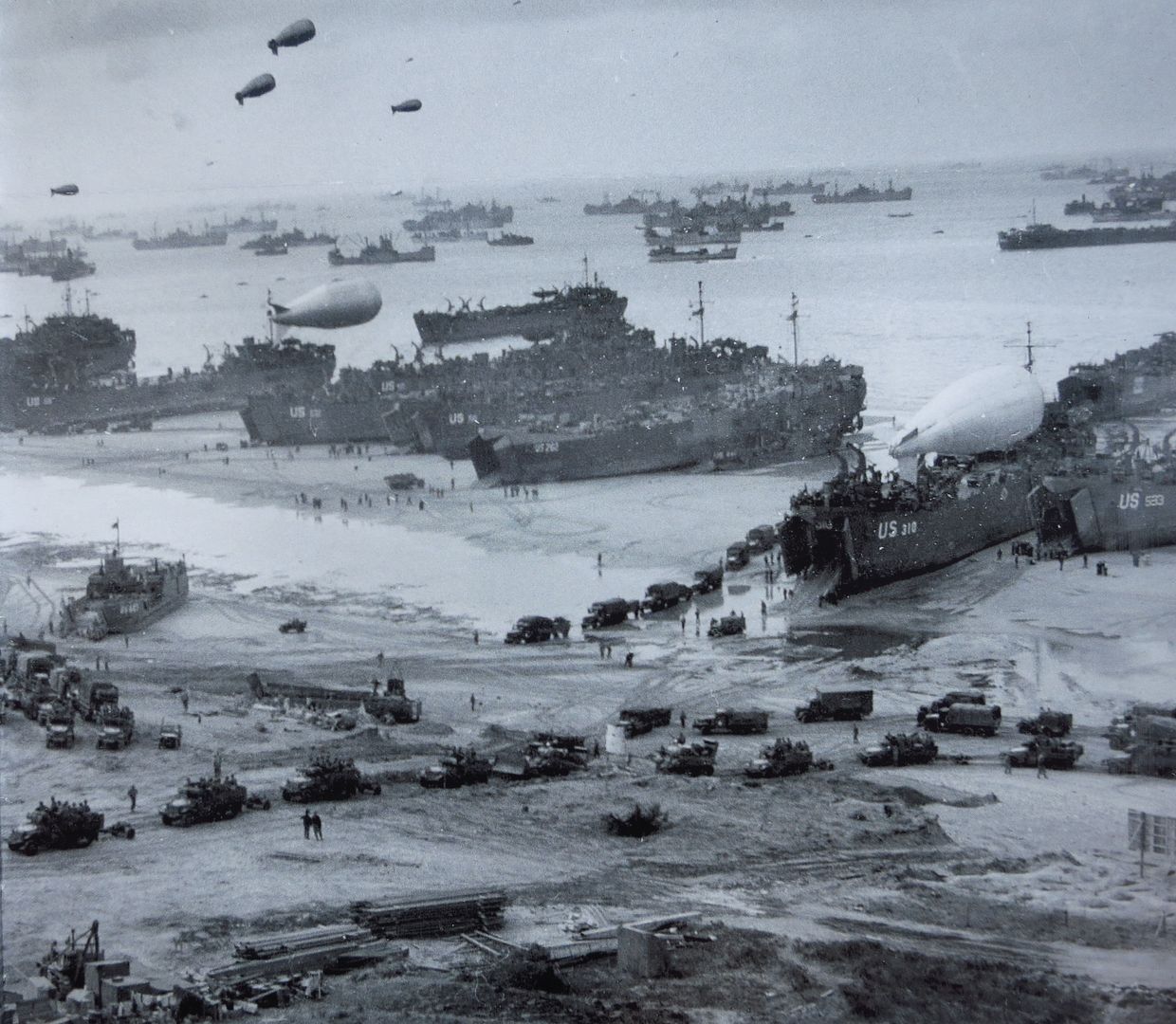
The most important part of this structure were the concrete blocks, called Phoenix, enormous reinforced caissons that were built by several different companies in Britain. 212 were made of different sizes depending on the location where they were going to be sunk – the biggest were 60 metres longs, 17 wide and 18 high, weighing 6,044 tonnes. Special docks were dug in the river Thames to finish them, since all the shipyards in the country were already working at full capacity building the landing craft.
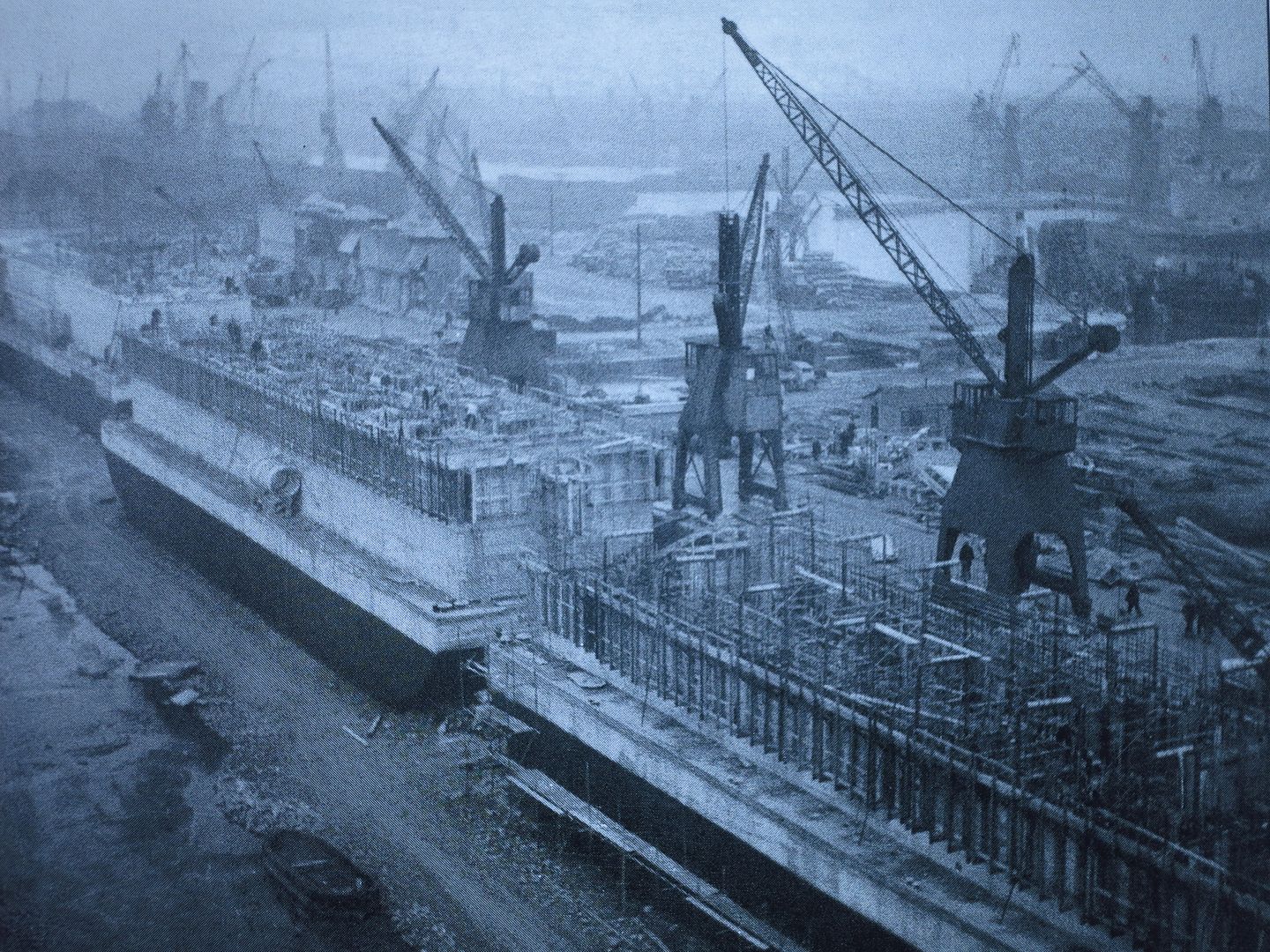
Once built, these huge structures were assembled in ports in the south of England and sunk below the surface to hide them from the Germans. When the time came, they were refloated and towed across the channel by two powerful tug boats each at a painfully slow speed of 4 knots. As they were empty, divided into compartments, they were also used to carry supplies during the crossing, and many of them had a tower with an anti-aircraft Bofors gun to protect them while travelling and to act as a permanent defence to the harbour once in place. When they reached their intended position the crew, which had been travelling inside them, would open a series of valves and flood them, sinking them onto the seabed one by one and thus creating a harbour.

Three: Floating docks called Loebnitz docks, which were steel and concrete pontoons with four square pillars on their corners. Once in position, the 30-metre high, 40-tonne steel pillars were released, anchoring themselves onto the seabed.

A system of pulleys ensured smooth vertical movement of the dock with the tides, meaning that now ships were not dependant on tides anymore and could dock at all times. Each pontoon had 18 rooms inside for storage and accommodation of the crew. To increase the harbour capacity, floating concrete pontoons were placed between the Loebnitz docks.
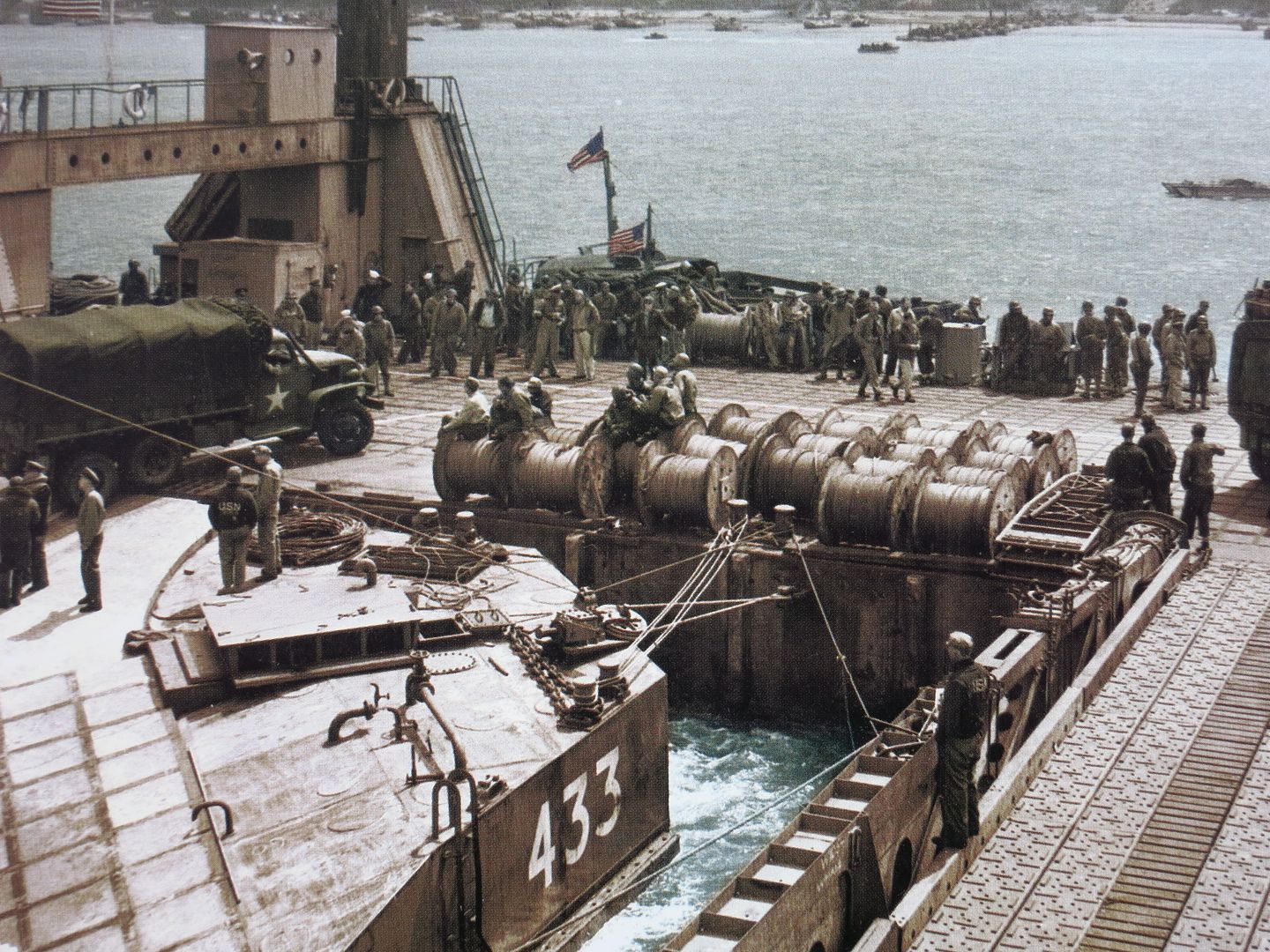
Four: The piers that connected the docks to the beach, which were made of 24-metre long units called Whale that attached to form a floating road that ended on the part of the beach where the tide did not reach. These sections were mounted on floats that were supposed to be made of steel, but due to a shortage of this material, many of them were made of concrete. The road was designed to float up and down with the tide, the sections closer to the beach resting on the sand at low tide, and to be torsional, meaning that they could move with tide currents in a controlled fashion but without breaking.
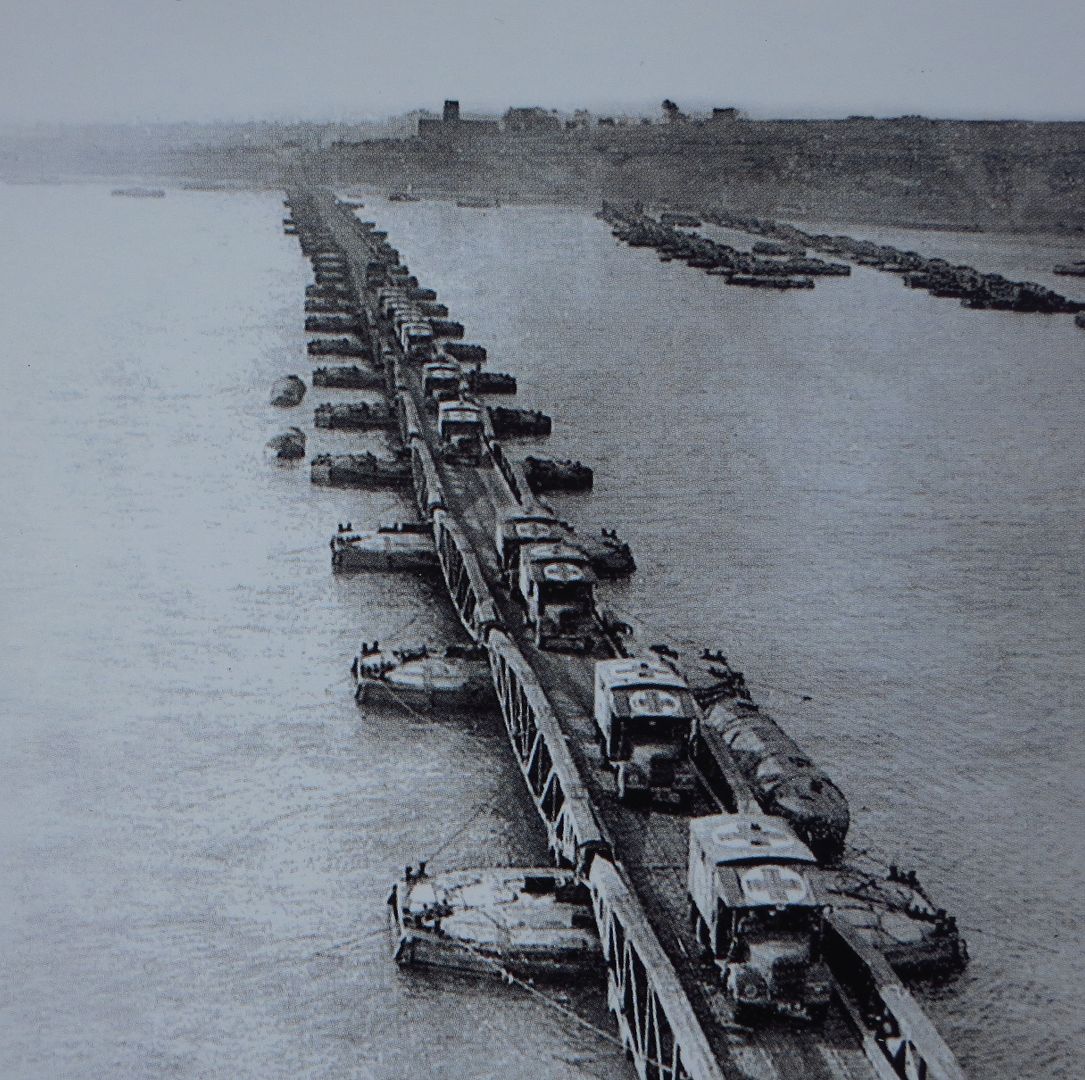
The two harbours were built in Gold and Omaha beach, and were partially operational only three days after D-day. The one at Omaha beach was destroyed by one of the fiercest storms that Normandy had seen in decades, leaving only Mulberry B in Gold operational.
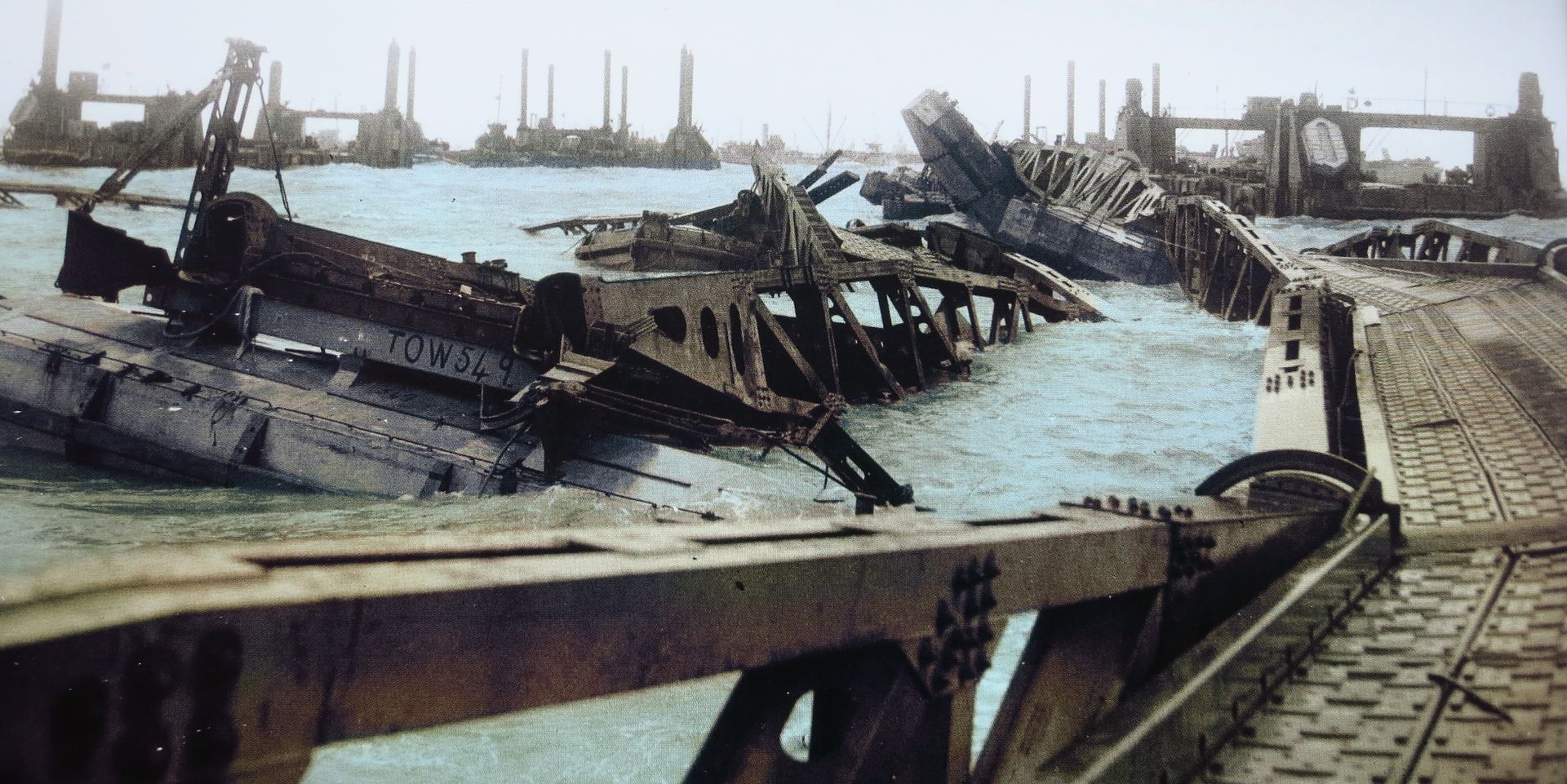
It had been designed to last only for 80 days in summer, but in 10 months two and a half million men, half a million vehicles and 4 million tons of supplies reached France thanks to it. It is considered one of the most important feats of military engineering ever.
The taking of important ports such as Cherbourg, Brest, Antwerpen or Le Havre together with the damage that the heavy traffic had done to the roads around Arromanches meant that by Christmas 1944, the dismantling of the harbour, named Port Winston after Winston Churchill, began. The remains of some of the Phoenix caissons can still be found at Arromanches, the best place to see them is the hill overlooking the town, where the 360º cinema is located. I rode up after visiting the museum - from there I could get a good view of the arc that the breakwater had formed. At the car park, two of the whales could be seen. Apparently, once the harbour was not in use anymore, these whales were taken away and used to replace destroyed bridges everywhere, and some can still be seen in place today.

The tide was ebbing, so I rode down to Arromanches once again to take a walk on the beach and get closer the only structures left that are accessible in the low tide – a few of the concrete floats that supported the whales, left on the beach as spare parts.
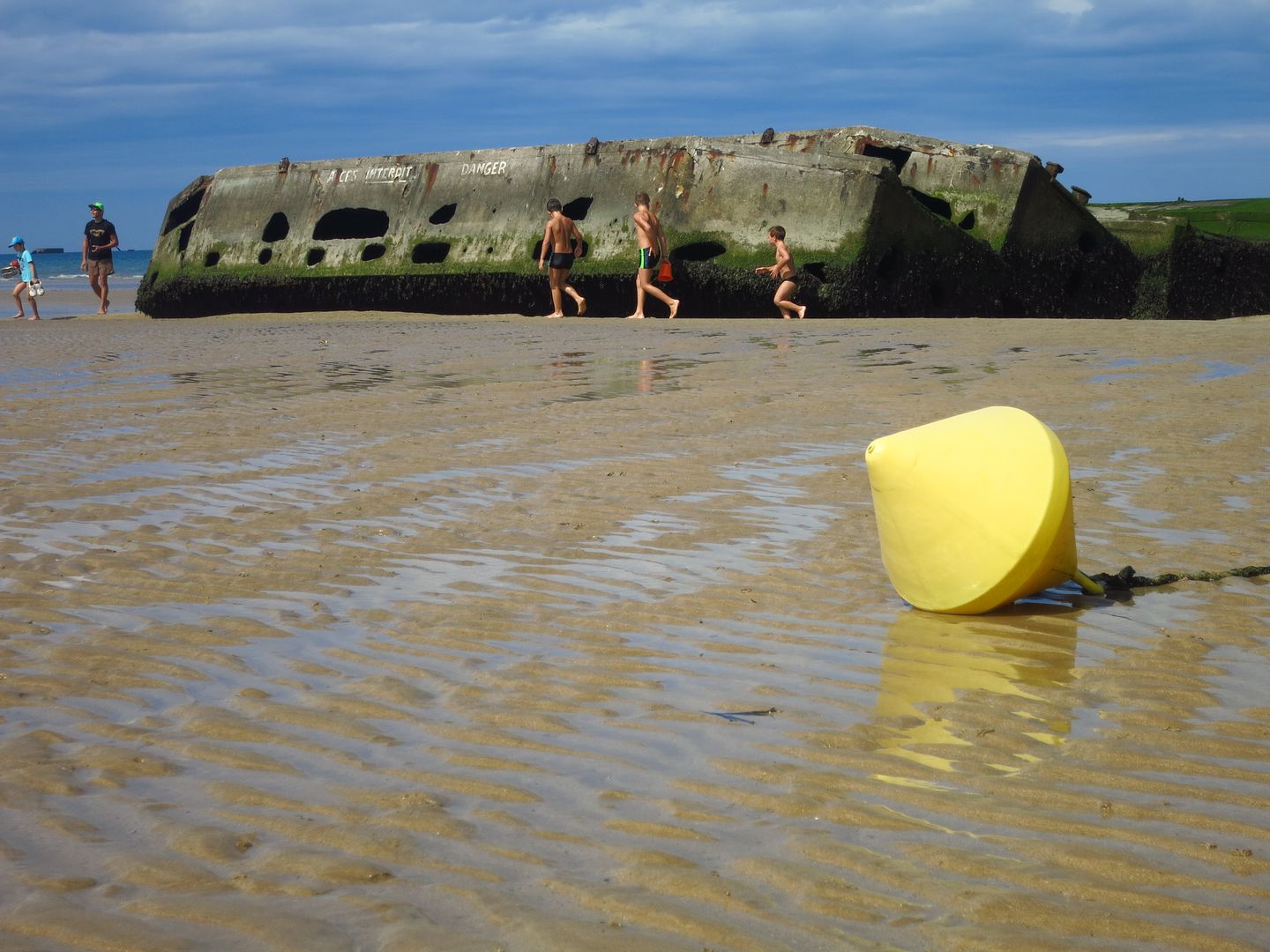
It was already lunchtime, so I rode up to the cinema again, had something to eat there with a beautiful view of the sea and then rode straight to Caen to spend the rest of the afternoon at the Caen Memorial Museum.
Word of warning – if you plan to visit this museum, do it with plenty of time. At 19€ for a full ticket (no discounts for a working, able-bodied, white male in his mid-30s...) it might seem expensive, but it is a huge museum. It starts with an overview of Europe before WWI, the events that triggered that war, how it changed the map of Europe and how it was pivotal in starting WWII, there is a full explanation of WWII and of the specifics of Operation Overlord, and a whole third section dedicated to post-war Europe and the Cold War. It is extensive, very exhaustive and it takes a lot of time to visit. There is also a bunker where the German army had the command post for the region, and the American, Canadian and British gardens.
More pictures here: https://www.facebook.com/media/set/?...4391351&type=3
(Except for the last two ones, all pictures in this post are taken from the book Arromaches, histoire d'un port from OREP Editions).
__________________
www.stromingtheworld-en.com
|

23 Sep 2015
|
 |
Contributing Member
Veteran HUBBer
|
|
Join Date: Oct 2012
Location: Barcelona
Posts: 127
|
|
|
Monet, the battle of the Somme and a mitraillette
Day 6 – Sunday 30th of August – Caen to Brussels (560km)
Aside from my main objective of visiting the sites of the D-day landings, there are other places to visit in Normandy, among them a route that follows the path of the famous impressionist painter and many WWI sites. In addition to all of this, one of my best friends works in Brussels, and I thought it would be a shame to be so close and not pay him a visit.
So, with only a few days left of holidays (two of which had to be used for the ride back to Barcelona), I set out to plan the perfect route to visit the best of Monet landscapes, WWI battle sites and reach Brussels in the evening.
I got up at 6am, and set off before 7. It was still quite dark, and a thick fog covered Caen. The sun did not break through until almost 8, just before I reached Honfleur, and what a beautiful sight it was. I was riding on small country roads, and out of a corner the sun beams suddenly pierced the fog almost horizontally and shone through the trees to light up the road ahead. Breathtaking.

They say that if you want to take good pictures the best times are at sunset and at sunrise, and visiting Honfleur early in the morning I can say this is totally true.
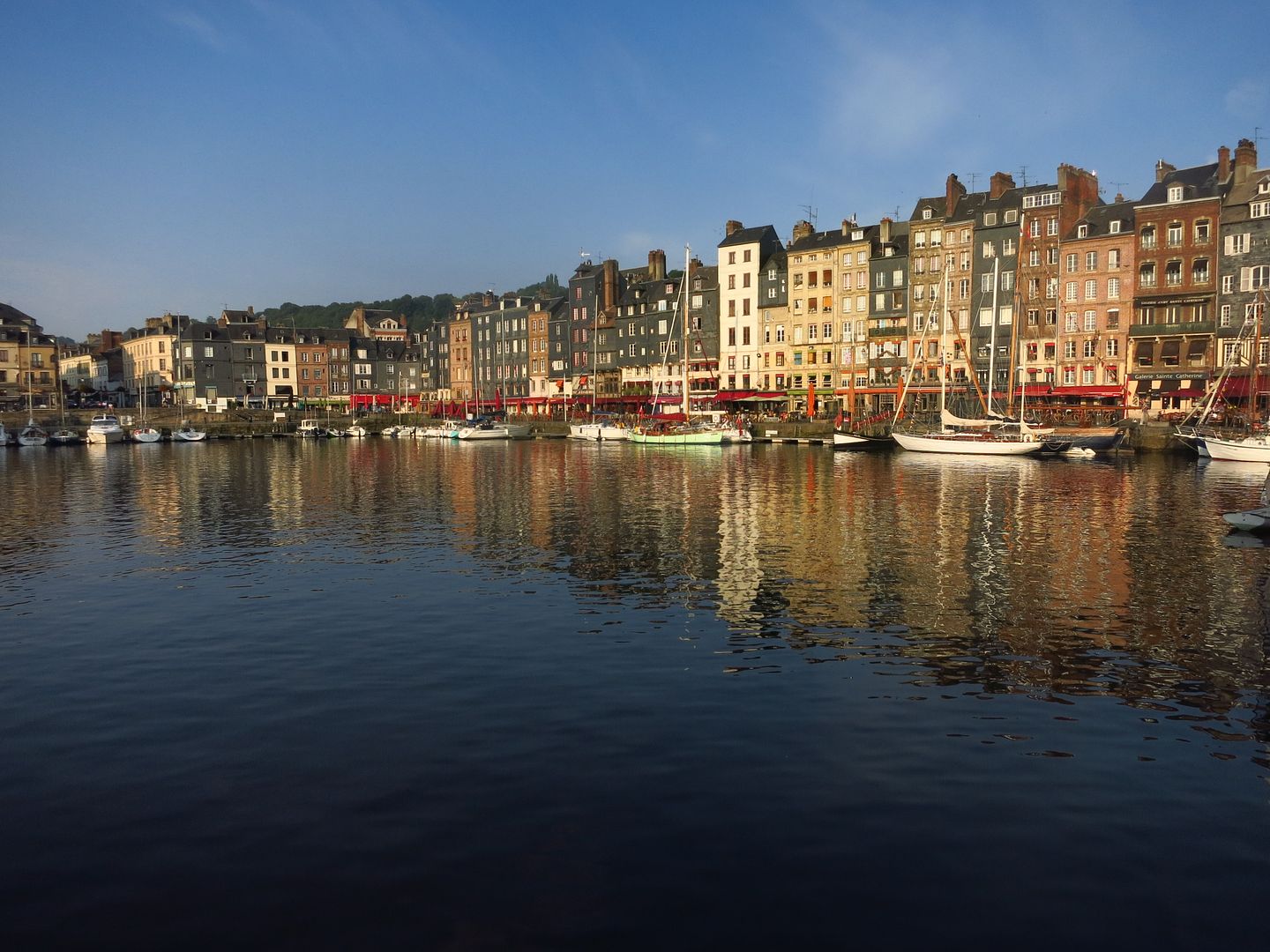
From there I headed to the famous cliffs in Étretat. This is the landscape highlight of the Normandy coast, and as such attracts large amounts of tourists, but two things played in my favour – one, it was still early when I got there and two, I was on a motorbike, not a car. The village of Étretat is quite small, so there are lots of car parks in the surroundings to prevent tourists from clogging the narrow streets with their cars and motorhomes, but the French being generally very nice towards motorbikes, there were special spots for us right next to the beach. Cool.
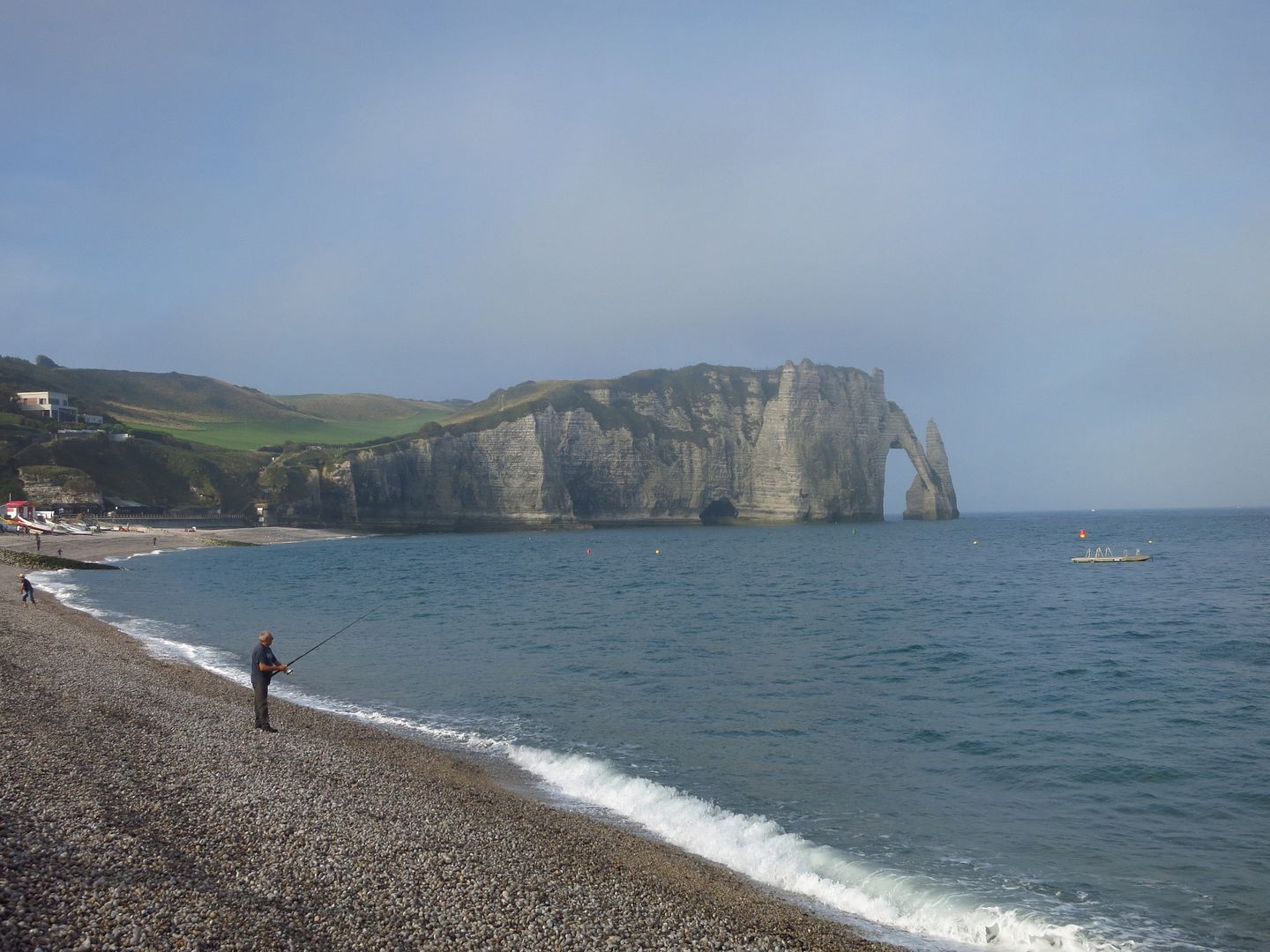
There was fog rolling in from the sea when I walked onto the promenade and I was just in time to see the impressive cliff arches at the end of the beach and snap a quick picture before they disappeared. To the other end of the beach there was a smaller arch which was not covered in fog, and the pebble beach was wide enough to walk near it at high tide. I took a long walk to stretch my legs a bit, today was going to be a long day on the bike, and I thought that a hike along the beach and back would be good exercise.
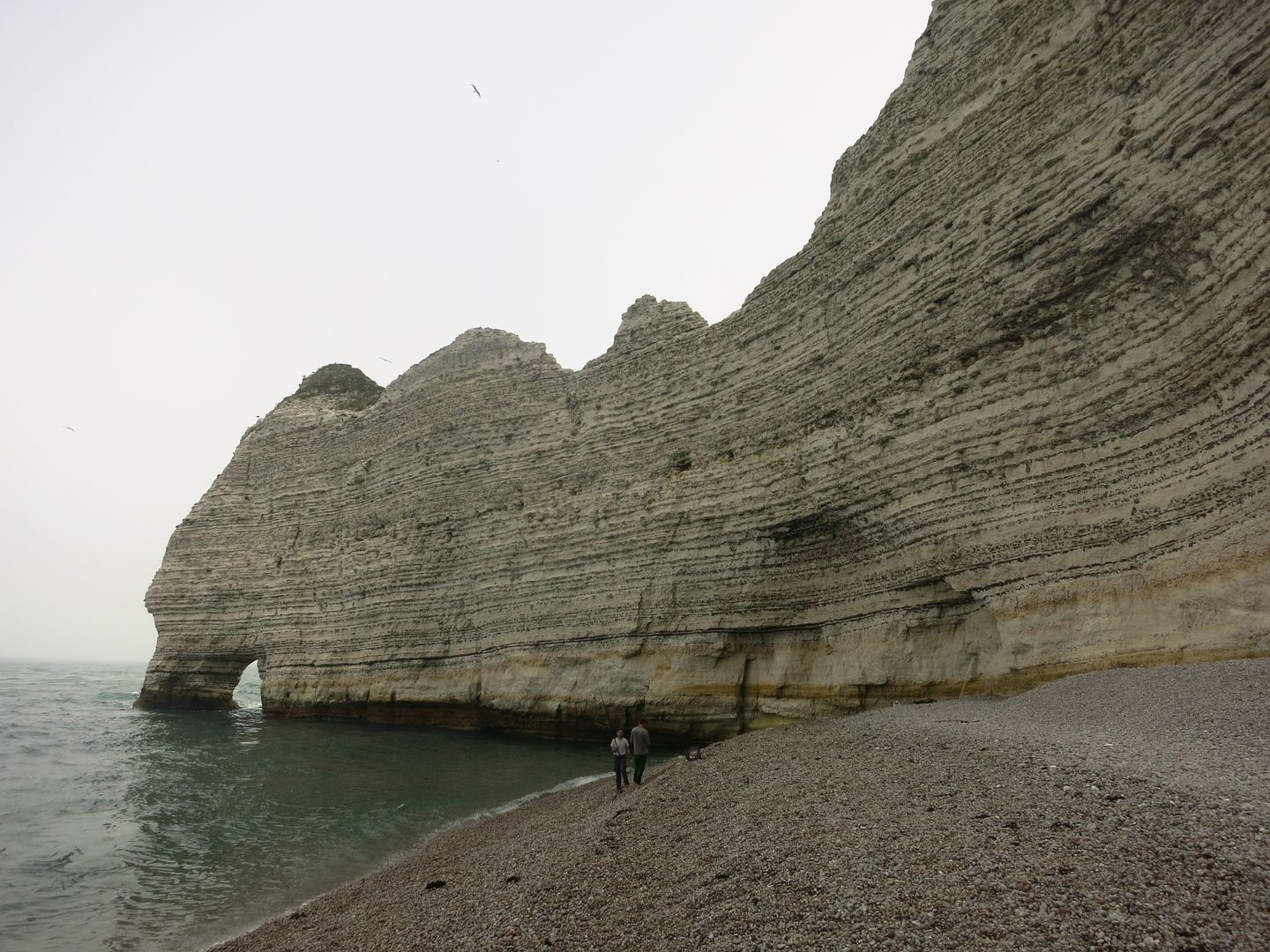
I could not get to the arch itself because of the tide, but when I was about to turn back I saw a short metal ladder leading to a tunnel that had been cut on the cliff wall. I had seen another tunnel on the way here and peeked into it, it seemed to gently slope down into the cliff. Not having my flashlight with me, and not wanting to risk getting into a tunnel that might flood with the flowing tide, I did not explore it any further. However, a family was coming out of this one, so I thought I would take a look. I climbed the ladder and saw light at the other end of the tunnel, not far. It was a relatively big tunnel, I could almost stand (I am 6 feet tall) and it led to the other side of the arch, where I found stairs climbing up the cliff face.

Nice, I did not need to walk back to the town along the beach, time to do some exploring. They led up to the top of the promontory called Le Chaudron, from where a path that is part of the GR-21 led back down to the town. The fog was closing in here as well, and with no protections other than a few handrails on the stairs to get a hold while climbing or descending and the number of tourists that visit the place, I was surprised that it did not appear in the news more often because a tourist had fallen off the cliff.
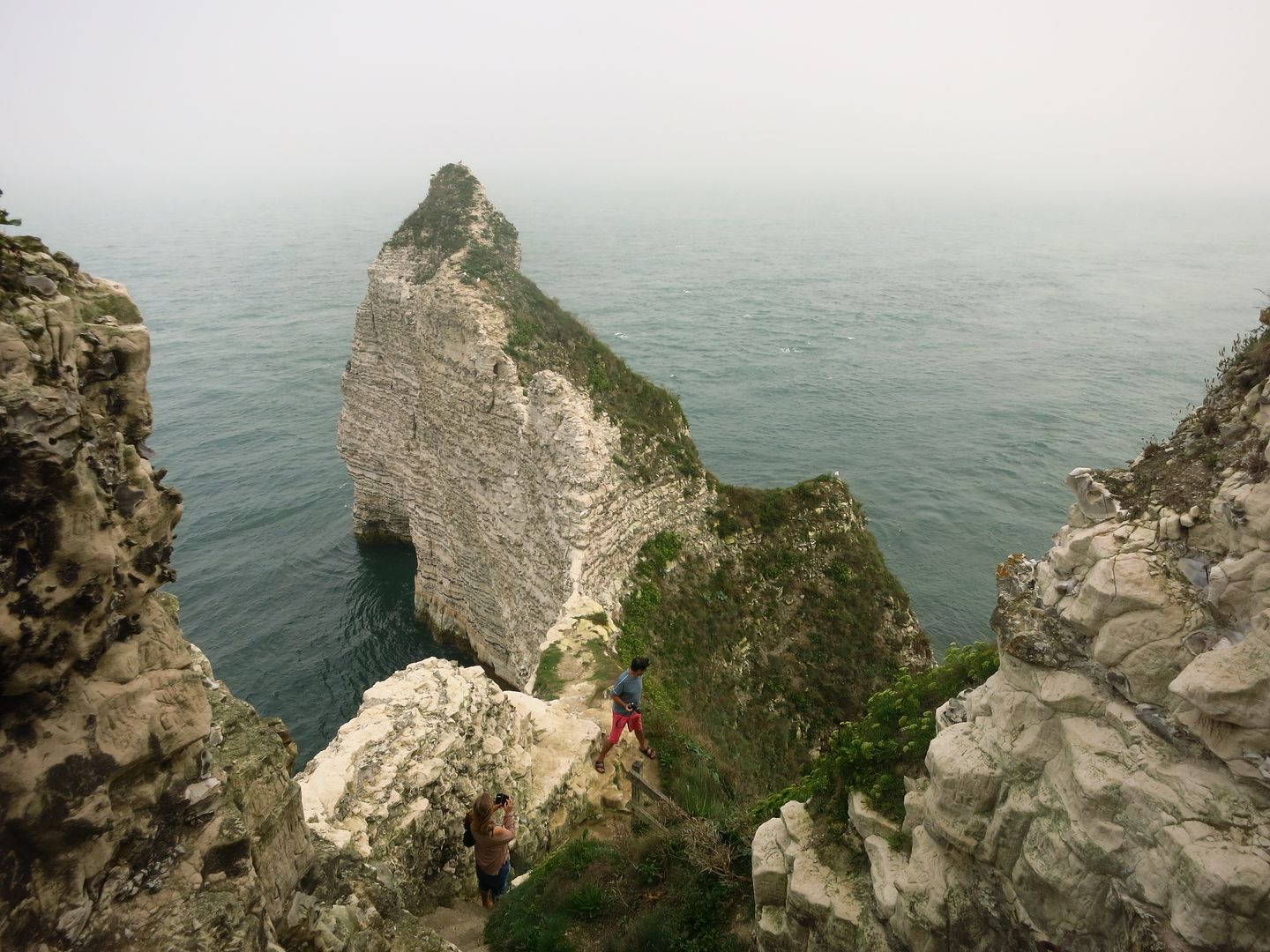
Before coming down I visited a small church overlooking the town and a monument called ‘L’Oiseau Blanc’, a memorial to WWI pilots Charles Nungesser and François Coli, who disappeared while attempting to cross the Atlantic on a white Levasseur PL.8 biplane. Two weeks later Charles Lindberg managed the feat on his Spirit of St. Louis.

When I came back to the motorbike the tourist hordes had already begun to invade the town, and most of them seemed to have not understood what the car parks at the entrance were for. There was an enormous traffic jam in the narrow streets leading to and from the beach, clogged with cars full of tourists sheepishly looking for place to park their car right next to the beach that just did not exist. I got the hell out of there and hit the road for a long stint to the next stop – the Thiepval Memorial.
This is the largest British war memorial in the world. It consists of two intersecting arcs du triomphe which are 43 metres tall, built on high ground that was controlled by the German army and that took a lot of lives to conquer. It is a memorial to all the British and South African soldiers who died in the Battle of the Somme and have no known grave, a total of 72.195 missing men.
Visible from a long distance in all directions, I thought it looked a bit strange as I approached it. When I arrived I found out why... it was being restored. A big scaffolding covered the memorial, and the grounds around it were closed to the public. The positive side was that to compensate for that, the museum at the interpretation centre did not charge visitors, so at least I got an interesting lesson on WWI and the Battle of the Somme for free.
From there I rode along the lanes that gently roll up and down the countryside to the nearby site of the Lochnagar Crater, a 67-metre diameter whole created by the detonation of an underground mine by the British. They had been digging tunnels from their trenches to place mines under the German lines in preparation for an attack, and placed 27,000 kg of ammonal in the Lochnagar mine. At 7:28 of the 1st of July 1916, the first day of the Battle of the Somme, they detonated the charges, eliminating between 90 and 120 metres of German trenches.
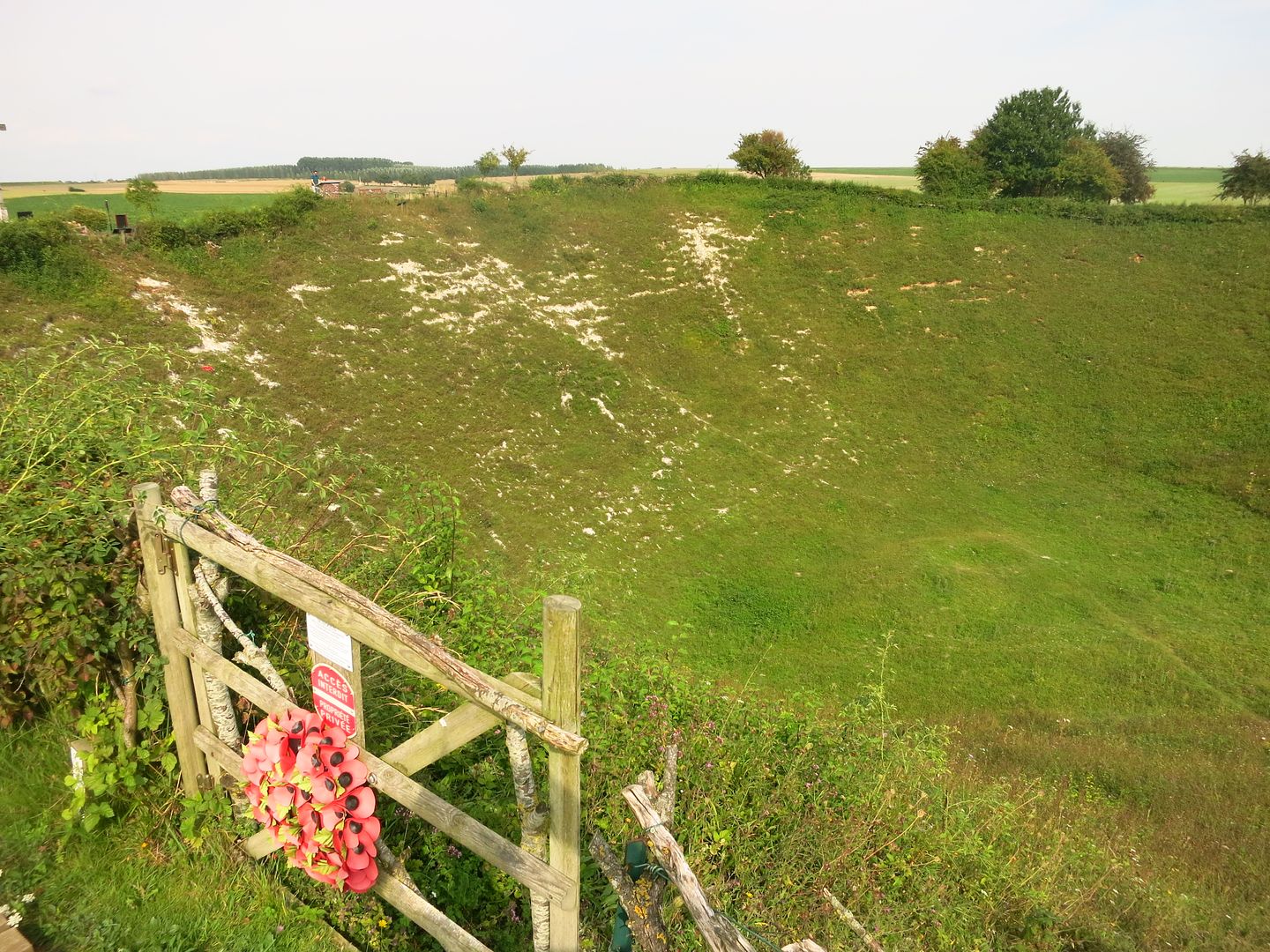
It was already mid-afternoon, but there was one more place I wanted to visit before heading for Brussels – the Somme American Cemetery. Unfortunately, it closed at 5pm, just 15 minutes before I got there.
Well, never mind, the countryside was dotted with smaller Commonwealth cemeteries, and I had visited some of them, including a memorial with a Welsh dragon in the woods near the village of Memetz. I did my Erasmus in Swansea, where one of the battalions who fought here came from. They were the 14th Service Battalion, which lost 400 of their 676 men trying to take these woods.
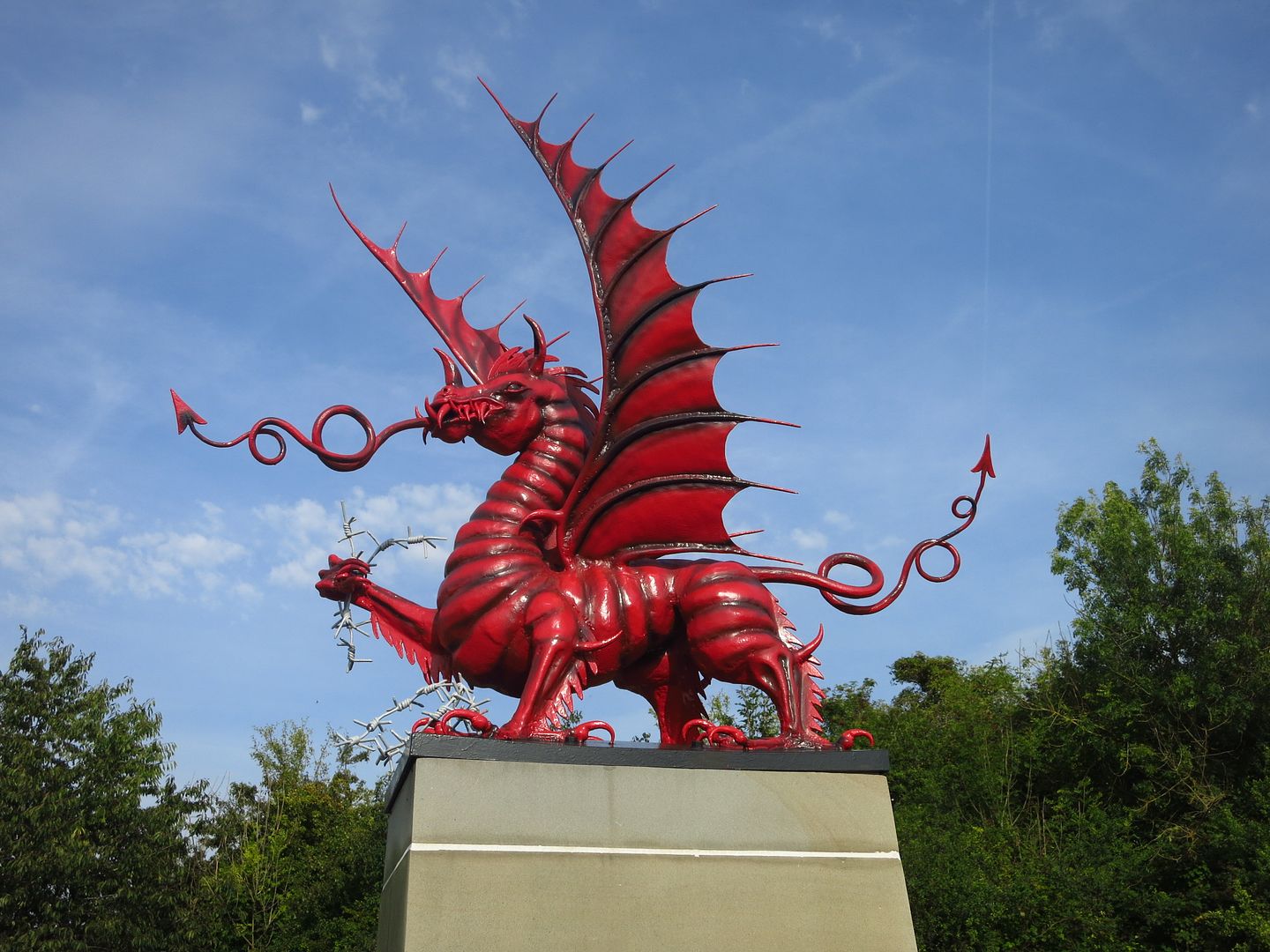
I got on the road for the ride to Brussels and it was not long before I reached the border, all traces of which have now disappeared, only a small sign by the side of the motorway indicating that I was in a different country. In fact, it was not the sign, but the driving of the other motorway users that warned me that I had changed countries.
In this respect, the Belgians are very much like the Spanish. That is, they seem to have great difficulty in understanding the use of fast and slow lanes on the motorway. Unlike them, the French master this dark art – they always drive on the right until they encounter a slower vehicle, at which point they indicate, change to the fast lane, overtake, and go back to the slow lane. If there is another slow vehicle ahead, they wait until they are at a reasonable distance from it, and then repeat the manoeuvre. The Belgians behave just like the Spaniards – they come up to a slower-moving vehicle, change lanes, and then happily stay on the fast lane because there is a lorry or something other on the slow lane a few kilometres down the road. They do not care that there is faster moving traffic behind. It does not matter that the right lane is unoccupied. They are happy sitting smack in the middle of the fast lane, blocking everyone behind them. They are, like the Spaniards, very skilled at creating traffic jams.
In spite of this, I managed to get Brussels, make my way through one of the most congested cities in Europe and find my friend’s apartment in time for dinner, which of course consisted of a good old mitraillette.
Now, for those of you who do not know what a mitraillette is, think of your regular two-course meal – some salad, fries, some kind of meat, some bread. Now put all of that together into one single thing and you get one of the most wonderful dishes in the world, the Belgian contribution to Europe’s multicultural diet. The mitraillette consists of half a baguette (or more) cut open lengthways, filled with meat (you can choose different kinds), crudités, fries, and on top of that, spoonfuls of a sauce of your choice. Here’s a picture:
 More pictures here: https://www.facebook.com/media/set/?...4391351&type=3
More pictures here: https://www.facebook.com/media/set/?...4391351&type=3
__________________
www.stromingtheworld-en.com
|

24 Sep 2015
|
 |
Contributing Member
Veteran HUBBer
|
|
Join Date: Oct 2012
Location: Barcelona
Posts: 127
|
|
|
Lunch at the Council and a visit to Leuven
Day 7 – Monday 31st of August – Brussels to Leuven to Brussels (44km)
We stayed up until late after the mitraillette, drinking some beer and discussing politics, so I did not get up really early the following morning. I spent some time writing and then went for a walk to the Parc du Cinquantenaire, near my friend’s apartment, to make some time until lunch, when I was to meet him at work, at the Council of the European Union.
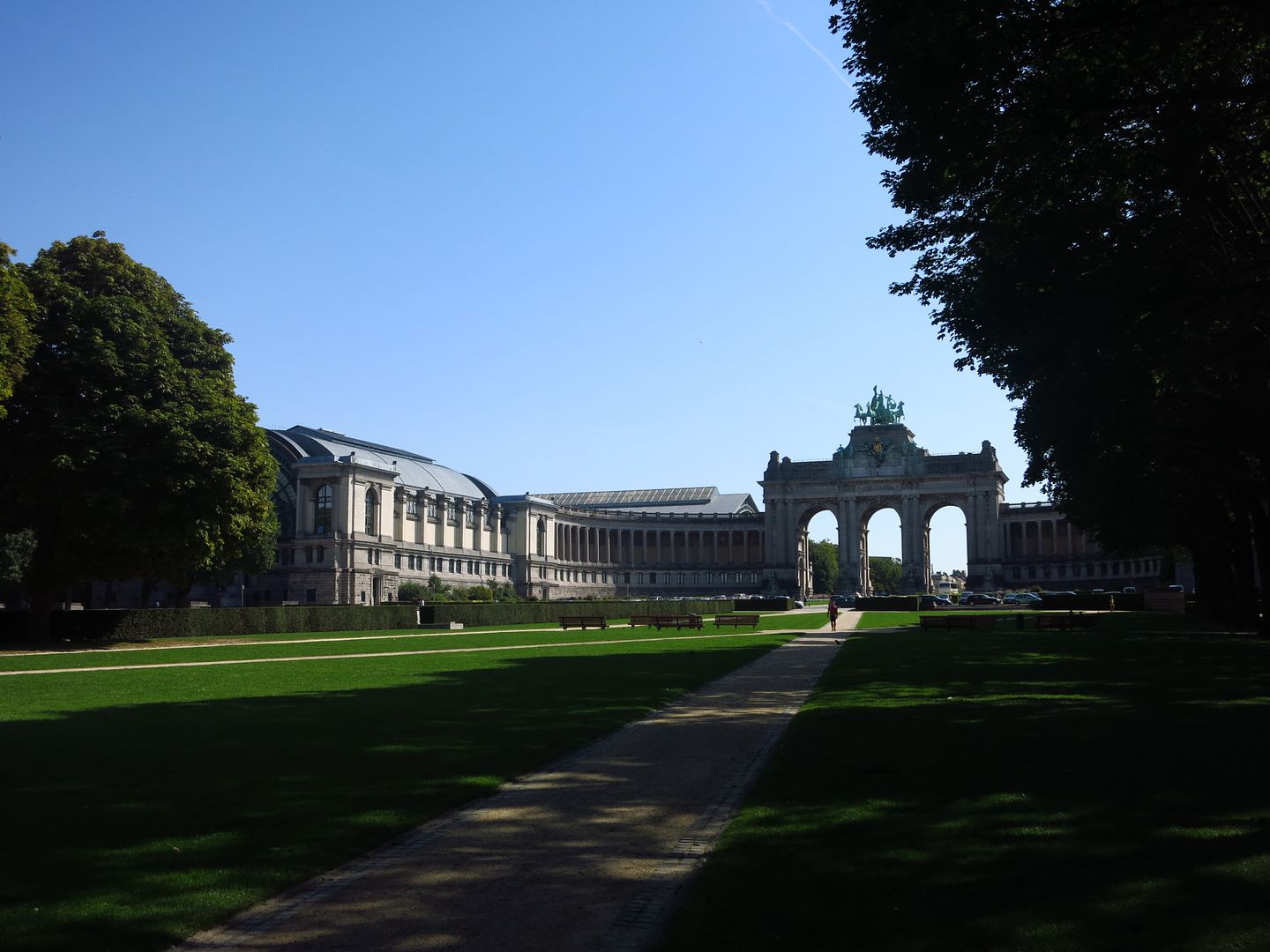
I had the afternoon to myself but having lived here between 2003 and 2004, I had already visited most of what there is to see in Brussels and around, the only place I had not time to see at that time was Leuven, which was only a 20-minute drive from the capital.
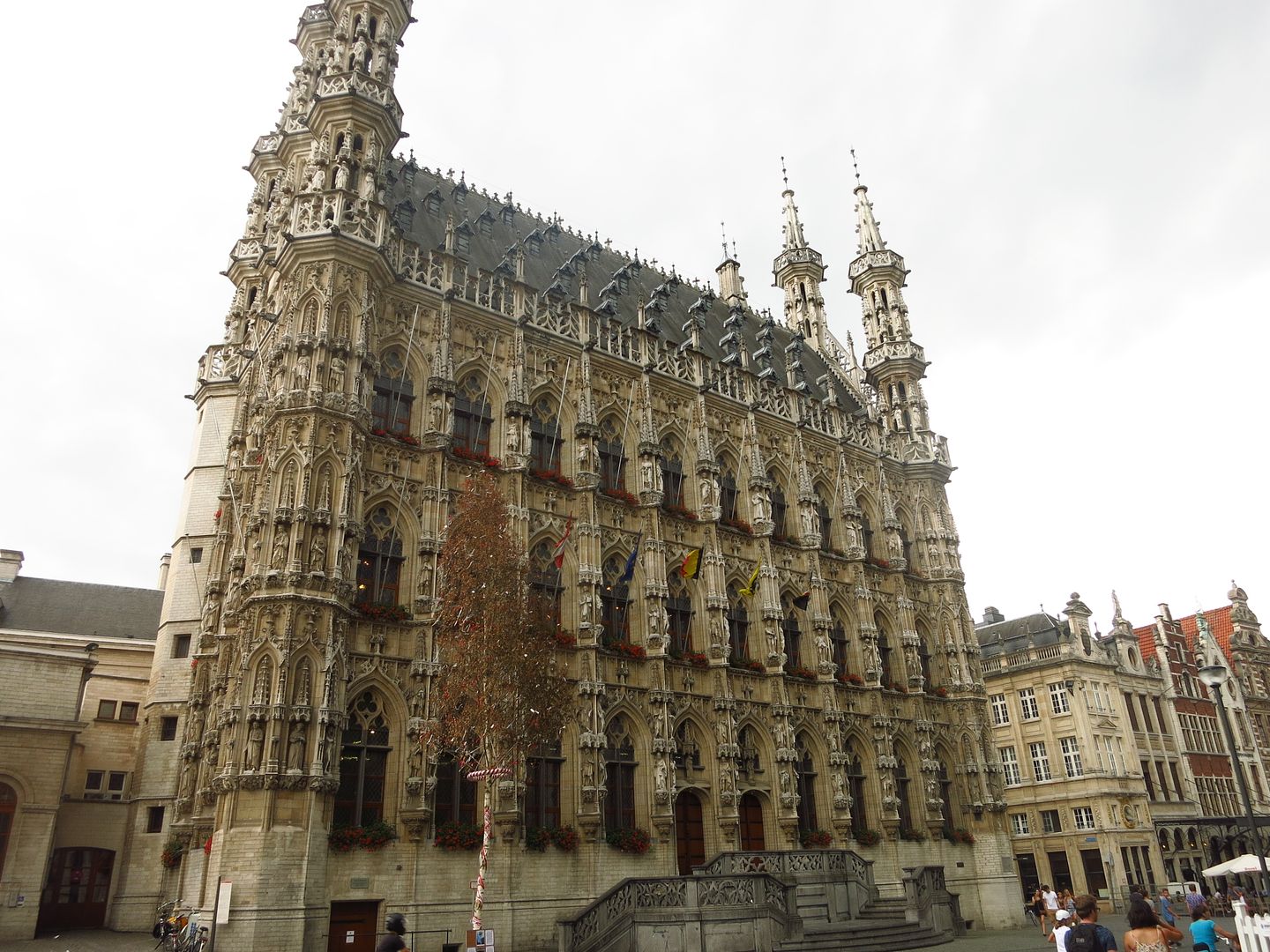
I left the bike near the cathedral and went for a walk around the old town. It is a beautiful city, with a vibrant student community. The skies were getting very dark and there was thunder, so I hurried back to Brussels in time for a shower and to meet my friend for dinner. We went to the neighbourhood of Schaerbeek, where we had what must be the best Turkish pizza in the city. After that, it was off to bed early, the long way back to Barcelona started the following day.
More pictures here: https://www.facebook.com/media/set/?...4391351&type=3
__________________
www.stromingtheworld-en.com
|

24 Sep 2015
|
|
Registered Users
Veteran HUBBer
|
|
Join Date: Mar 2007
Location: UK
Posts: 4,343
|
|
An excellent tour.
But, that "food" is truly junk and Jupiler  is little better!
When I lived in Belgium for some 15 months the national food was Moules et Frites (but that was Walloon country and it was quite a while ago; Brussels is not Belgium as such, being an "internatlonal" city that happens to be located in the Flemish part of Belgium; having just read your last posting I expect you know all of this).
__________________
Dave
Last edited by Walkabout; 24 Sep 2015 at 15:01.
Reason: added bit about last posting
|

25 Sep 2015
|
 |
Contributing Member
Veteran HUBBer
|
|
Join Date: Oct 2012
Location: Barcelona
Posts: 127
|
|
Quote:
Originally Posted by Walkabout

An excellent tour.
But, that "food" is truly junk and Jupiler  is little better!
When I lived in Belgium for some 15 months the national food was Moules et Frites (but that was Walloon country and it was quite a while ago; Brussels is not Belgium as such, being an "internatlonal" city that happens to be located in the Flemish part of Belgium; having just read your last posting I expect you know all of this). |
Thanks! Yes, the mitraillette is kind of the Belgian kebab but it brigns back good memories of my time as a student there 
I totally agree about Jupiler, worst thing you can buy in Belgium... We stuck to trappist ones. 
__________________
www.stromingtheworld-en.com
|

25 Sep 2015
|
 |
Contributing Member
Veteran HUBBer
|
|
Join Date: Oct 2012
Location: Barcelona
Posts: 127
|
|
|
The longest ride ever
Day 8 – Tuesday 1st of September – Brussels to Barcelona (1,352km)
I had done this journey before, when I lived in Belgium, but by car. It took about twelve hours, and other then being tremendously boring, there was no difficulty to it. On the motorway things are very different on a motorbike, however – no music, you can’t move much, you need to take breaks more often, wind and buffeting are an issue at high speeds (the legal limit is 130km/h on French motorways), etc. On the way up to Normandy I had divided the trip in two days, stopped past Bordeaux to spend the night, and that was the plan on the way back home as well.
I did not even set off particularly early, we got up, had a good breakfast and I left when my friend went to work, at around 9am. I had to deal with heavy commuter traffic riding out of Brussels, and even come congestion caused by a motorbike accident – I forgot to mention it was raining hard.
Once out of Brussels things went smoothly – no more rain, practically no traffic, no wind... So I started covering good distance without problems. The wind deflector I had fitted a few weeks before was doing its job, and for the first time ever I was using earplugs. This is something I have heard from a lot of bikers, but I had never felt the need for it. However, travelling for extended periods of time at high speeds, they make a world of a difference. Wind noise is greatly reduced and so is fatigue.
On the big Stroming The World trip I met a Czech guy in Volgograd with a GSA, Martin, he told me he had been doing 800km a day to get there, trying to get Europe out of the way quickly and save days for the interesting bits. At that time I was doing about 500km a day on my V-Strom, and was shocked at the distances he was covering. Fast forward to 2015 and sitting on the Yamaha I could see that it was very relaxed cruising at 130km/h (real, not indicated), and I was not getting tired. By lunchtime I was approaching Clermont-Ferrand, and I was still feeling fresh. It was at this point that I started considering pushing on to Barcelona on the same day. If I stopped for the night later on, I would already be near the border, and in that case I did not really fancy spending the cost of a hotel night so near home. In addition, the route from there became quite interesting for a motorway. My experience of previous trips through France so far had been mostly on the eastern route - Montpellier, Lyon, Dijon, Nancy, Metz... or the western one - Toulouse, Bordeaux, Nantes... both of which I had found tremendously boring. This time I had taken the middle route, going from Brussels to Paris on the A2 and A1 and then the A6 and A77 to Clermont-Ferrand. There is a bit between Magny-Cours and Nevers that is not motorway, and after Clermont-Ferrand the A75 travels through mountainous terrain, passing near the Auvergne volcanos and crossing the Cévennes national park. It is a mountain motorway, with corners, steep gradients and great landscape, and best of all, the Millau viaduct, an amazing feat of engineering and a sight to behold. All in all, it was a much more entertaining journey than I anticipated, and cheap too, there are long sections that are toll-free. Oh, and one more sign that the French are super nice towards bikers, motorbikes pay a reduced fare on tolls, almost 50% less in some cases. No wonder this is the favourite route for holidaymakers heading from the capital to Spain.
I got to the border at 8pm, and crossed it in reserve – fuel is cheaper in Spain. The sun set as I was filling up, and by 9:30pm I was already in Barcelona. It had taken 12 hours and 31 minutes, stops included. This made me realise that what Martin had been doing was perfectly feasible on my new bike, and that when the day comes to go back to Russia, Kazakhstan, etc. I can cut through western Europe faster.
Well, it had been a very interesting week, and given the time and the money, I would have spend at least another week exploring the coast of Normandy, there is so much to see there. If anybody is thinking about taking a trip there, do not think twice, do it. Obviously, my advice is to do it by motorbike, as it is the best way to enjoy the roads, and you will save a lot of money on tolls and parking fees, but if you are not a rider, a very good alternative (I cannot believe I am going to say this) is a motorhome. There are lots of specially prepared places where you can park and spend the night for free, saving lots of money in accommodation, which is not cheap up there, you have your own means of transport to get around and visit things, and if you do not have one or do not want to drive one all the way to Normandy, there are lots of campsites that rent them at very reasonable rates. I would definitely not recommend a car, as it has zero advantages over the motorbike - you have to pay to park it everywhere, and while it is just as boring to drive as a motorhome, at least this last one gives you a cheap place to sleep in. Go visit Normandy.
See you on the road.
__________________
www.stromingtheworld-en.com
|
|
Currently Active Users Viewing This Thread: 1 (0 Registered Users and/or Members and 1 guests)
|
|
|
 Posting Rules
Posting Rules
|
You may not post new threads
You may not post replies
You may not post attachments
You may not edit your posts
HTML code is Off
|
|
|
|
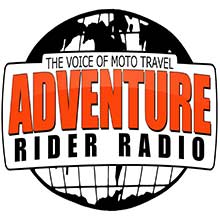
Check the RAW segments; Grant, your HU host is on every month!
Episodes below to listen to while you, err, pretend to do something or other...

2020 Edition of Chris Scott's Adventure Motorcycling Handbook.
"Ultimate global guide for red-blooded bikers planning overseas exploration. Covers choice & preparation of best bike, shipping overseas, baggage design, riding techniques, travel health, visas, documentation, safety and useful addresses." Recommended. (Grant)

Led by special operations veterans, Stanford Medicine affiliated physicians, paramedics and other travel experts, Ripcord is perfect for adventure seekers, climbers, skiers, sports enthusiasts, hunters, international travelers, humanitarian efforts, expeditions and more.
Ripcord Rescue Travel Insurance™ combines into a single integrated program the best evacuation and rescue with the premier travel insurance coverages designed for adventurers and travel is covered on motorcycles of all sizes.
(ONLY US RESIDENTS and currently has a limit of 60 days.)
Ripcord Evacuation Insurance is available for ALL nationalities.
What others say about HU...
"This site is the BIBLE for international bike travelers." Greg, Australia
"Thank you! The web site, The travels, The insight, The inspiration, Everything, just thanks." Colin, UK
"My friend and I are planning a trip from Singapore to England... We found (the HU) site invaluable as an aid to planning and have based a lot of our purchases (bikes, riding gear, etc.) on what we have learned from this site." Phil, Australia
"I for one always had an adventurous spirit, but you and Susan lit the fire for my trip and I'll be forever grateful for what you two do to inspire others to just do it." Brent, USA
"Your website is a mecca of valuable information and the (video) series is informative, entertaining, and inspiring!" Jennifer, Canada
"Your worldwide organisation and events are the Go To places to for all serious touring and aspiring touring bikers." Trevor, South Africa
"This is the answer to all my questions." Haydn, Australia
"Keep going the excellent work you are doing for Horizons Unlimited - I love it!" Thomas, Germany
Lots more comments here!

Every book a diary
Every chapter a day
Every day a journey
Refreshingly honest and compelling tales: the hights and lows of a life on the road. Solo, unsupported, budget journeys of discovery.
Authentic, engaging and evocative travel memoirs, overland, around the world and through life.
All 8 books available from the author or as eBooks and audio books
Back Road Map Books and Backroad GPS Maps for all of Canada - a must have!
New to Horizons Unlimited?
New to motorcycle travelling? New to the HU site? Confused? Too many options? It's really very simple - just 4 easy steps!
Horizons Unlimited was founded in 1997 by Grant and Susan Johnson following their journey around the world on a BMW R80G/S.
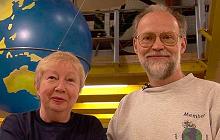 Read more about Grant & Susan's story
Read more about Grant & Susan's story
Membership - help keep us going!
Horizons Unlimited is not a big multi-national company, just two people who love motorcycle travel and have grown what started as a hobby in 1997 into a full time job (usually 8-10 hours per day and 7 days a week) and a labour of love. To keep it going and a roof over our heads, we run events all over the world with the help of volunteers; we sell inspirational and informative DVDs; we have a few selected advertisers; and we make a small amount from memberships.
You don't have to be a Member to come to an HU meeting, access the website, or ask questions on the HUBB. What you get for your membership contribution is our sincere gratitude, good karma and knowing that you're helping to keep the motorcycle travel dream alive. Contributing Members and Gold Members do get additional features on the HUBB. Here's a list of all the Member benefits on the HUBB.
|
|
|
 7Likes
7Likes





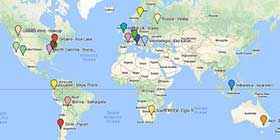









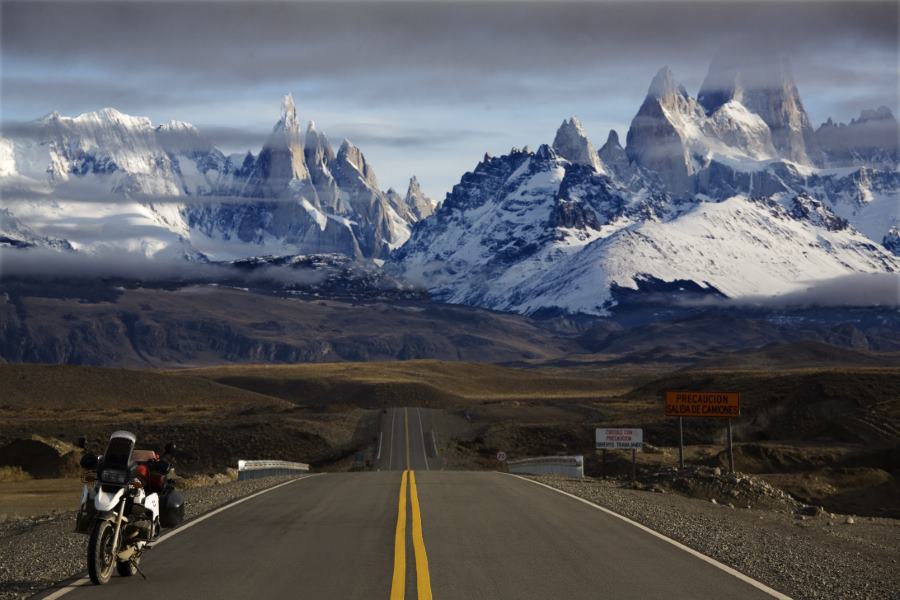

































 is little better!
is little better!


 Hybrid Mode
Hybrid Mode









